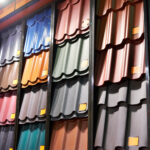Architectural Shingles vs. Metal Roof: Which is Best for Your Home?
October 18, 2024 | By Mike Gonet | Filed under: Blog

Choosing the right roofing material is a critical decision for homeowners. Two popular options are architectural shingles and metal roofing, both offering unique benefits. This article from a Rhode Island roofing company will compare architectural shingles and metal roofs, covering key factors like durability, cost, aesthetics, energy efficiency, and maintenance.
Durability and Longevity
One of the first factors to consider when comparing architectural shingles and metal roofs is their durability. Architectural shingles are known for their layered construction, offering improved protection against wind and hail. Depending on the climate and maintenance, they typically last around 25-30 years.
In contrast, metal roofs are renowned for their longevity, often lasting 40-70 years. Metal roofing materials like aluminum, steel, or copper are resistant to weather extremes, making them less susceptible to wear and tear. This longer lifespan can be a huge advantage for homeowners looking for long-term roofing solutions.
Cost Comparison
Regarding cost, architectural shingles are generally more budget-friendly than metal roofing. The upfront cost of shingle installation ranges from $4 to $7 per square foot, depending on the brand and installation complexity. This makes shingles an attractive option for homeowners working within a tighter budget.
Metal roofing, while more expensive upfront, costs between $8 to $12 per square foot. Though it requires a higher initial investment, metal roofing can save money over time due to its longevity and energy efficiency, potentially reducing long-term maintenance and energy costs.
Aesthetic Appeal
Architectural shingles offer various styles, colors, and textures that can mimic the look of wood, slate, or even tile, making them a versatile choice for different architectural styles. Depending on the chosen design, they are often chosen for their ability to enhance curb appeal while offering a traditional or modern look.
On the other hand, metal roofs are known for their sleek and contemporary appearance. They are available in various finishes and colors, allowing homeowners to achieve a modern, industrial look or even mimic traditional materials like slate or tile. However, some homeowners may feel that metal roofs clash with certain architectural styles, particularly older homes.
Energy Efficiency
Energy efficiency is an essential consideration for homeowners looking to reduce energy costs. Architectural shingles absorb more heat due to their material and darker colors, which can lead to increased cooling costs in warmer climates. However, specific energy-efficient shingle options are available, often with reflective coatings designed to reduce heat absorption.
Metal roofs are more energy-efficient by nature, as they reflect sunlight rather than absorb it. This reflective property helps keep homes more relaxed in hot weather, reducing the need for air conditioning. Some metal roofs are coated with specialized finishes to enhance this reflective capability, making them an excellent choice for energy-conscious homeowners.
Maintenance and Repairs
Maintenance is another key factor to evaluate. Architectural shingles require periodic maintenance, especially in regions with harsh weather. Shingles can crack, curl, or lose granules over time, requiring repairs or replacement of sections.
Metal roofs, on the other hand, are extremely low-maintenance. They are resistant to cracking, warping, or corrosion, especially if the roof is made from high-quality materials like aluminum or copper. While dents from hail or falling branches can occur, metal roofs generally require fewer repairs and withstand most elements better than shingles.
Conclusion
Choosing between architectural shingles and metal roofing ultimately depends on your budget, aesthetic preferences, and long-term goals. Architectural shingles are a great choice for those seeking affordability and a wide range of design options. Metal roofs, while more expensive upfront, offer superior durability, energy efficiency, and longevity. By weighing these factors, you can make an informed decision that suits your home’s needs and enhances its value.





